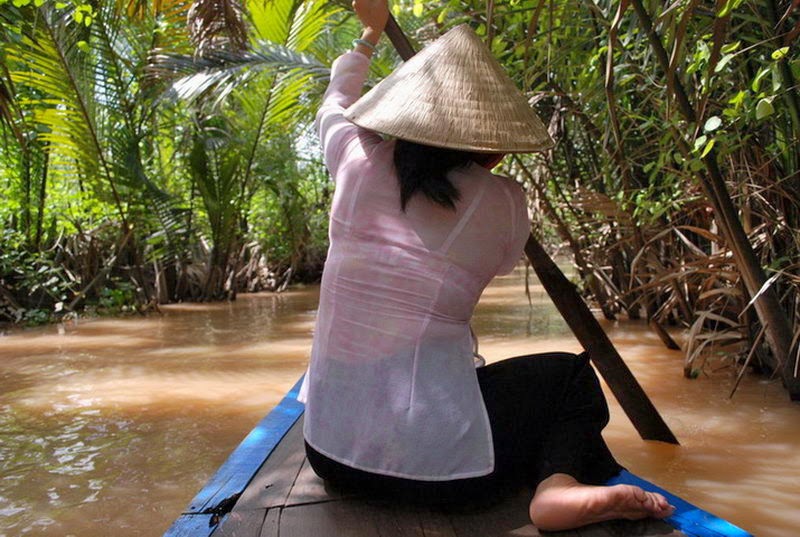Most of the food that is classified as “Singaporean” is really adopted from neighboring countries, with an added twist. This is because the ethnic diversion of Singapore is 75% Chinese, 10% Indian, and the other 15% is a mix of Malay, Indonesian, Singaporean, etc. Not surprisingly, the food is heavily influenced by these nations. You will find classic Chinese dishes with Indian spices (or something variation like this), which makes many of the dishes unique to the culture.
Lastly, eating food is considered a national pastime and a unifying cultural thread in Singapore. Singaporean literature even declared food as a national obsession. When I was in Singapore, I looked forward to every single meal (which was more like a binge-eating phenomenon). I must end my food rant before it gets too long.. but here is my top 8 dishes that you need to eat in Singapore:
 Chilli Crab:
Chilli Crab: This dish is, hands down, in my top 3 favorite foods of all-time! Chilli crab is exactly what the name sounds like: a fresh crab doused in a sweet and savoury, tomato based chili sauce. The history of this national dish dates back to the 1950s, when the owners of
Roland Restaurant did an experiment with crabs, tomatoes and chilli sauce. Every restaurant has it’s own slight variation, but you can never go wrong with ordering this amazing dish. It’s not commonly found in hawker centers, so your best bet is to find a restaurant. Just look at other peoples plates and find the best chilli crab that catches your eye!

Photo by ‘Alpha’ on Flickr
Hainanese Chicken Rice: Nothing suits Singaporean food better than Chicken Rice. Although the name isn’t very appealing, this dish is robust in flavor and will leave you coming back for more. Originally from Chinese origin, the chicken is specially prepared in Hainanese style- steeping the entire chicken at sub-boiling temperatures in a chicken bone stock, and reusing the broth over and over again until perfection. Mix in a little rice and ginger and you’ve got an incredbile meal. This dish is commonly eaten in schools, hawker centers, and even major restaurants (basically everywhere). And it’s super cheap!

Photo by Ben Lee on Flickr
Char Kway Teow: This popular noodle dish is a national favorite to the people of Singapore. It consists of stir-fried flat rice noodles, over prawns, bean sprouts, deshelled cockles, bean sprouts, Chinese chives, Chinese sausage and eggs, mixed together with a light and dark soy sauce. Traditionally, this dish is stir-fried in pork fat, making it somewhat unhealthy (but who counts calories when they’re traveling anyways). Once you see this dish in front of your own eyes, it’s game over. You’ll never think the same about any stir-fried dish.

Photo by Su-Lin on Flickr
Carrot Cake: Known as Chai Tow Kway, this is NOT like the carrot cake you are used to eating (the dessert). In fact, it’s completely opposite and has nothing to do with carrots. Carrot cake in Singapore consists of consists of cubes of steamed rice flour and white radish cake, fried together in an egg-like an omelette. Then, it is mixed with spring onions and other vegetables and spices. Carrot cake can be served as either white (plain) or dark (seasoned with sweet black sauce). This recipe, enjoyed by everyone in Singapore, is specifically common to the
Teochew cuisines. You’ll find this in every hawker center in Singapore.

Photo by ‘Lynac’ on Flickr
Wanton Mee: Originated as a Cantonese dish, typical Wanton Mee is a noodle dish, served in a hot broth with vegetables and wonton dumplings. However, the Singapore version is slightly different. In Singapore, people eat Wonton Mee dry with some light sweet sauce, slices of pork char, leafy vegetables and some delicious wonton dumplings. You can get it spicy, or not spicy, and it usually comes with soup on the side. It’s pretty damn tasty.

Photo by ‘Travis’ on Flickr
Kaya Toast: If you want the best breakfast ever, then eat Kaya Toast. This dish is commonly enjoyed by locals as a snack, and goes very well with tea and/or coffee. Kaya Toast is prepared with kaya (coconut jam), and topped with eggs, sugar, coconut milk and pandan preserves. If you want, you can dip the toast in a soft-boiled egg for more flavor. It’s nearly impossible to find a coffee shop in Singapore that doesn’t sell this magical toast.
 Mee Goreng:
Mee Goreng: Your Singapore food tour isn’t complete until you’ve tried Mee Goreng. This dish, commonly found in Indonesia, Malaysia and Singapore, is made with yellow noodles that are fried in cooking oil. It can take on any variety of other ingredients, such as onions, garlic, spices, chili, cabbage, tomato, egg, pickles and some kind of meat (fried prawn, chicken, beef). Don’t count your calories on this dish, but nonetheless it’s one of my favorite SouthEast Asian foods. It is sold by most street vendors, hawker centers, and many restaurants around town. It’s pretty spicy so prepare yourself!

Chwee Kuey: This dish isn’t a “fan favorite” per se, but it’s really unique and tasty. It is a variety of steamed rice cake, made from rice flour and water mixed together. Then, they are steamed and cut into round shapes (like a saucer), and topped off with radish and special chilli sauce. It’s much different than any other dish I ate in Singapore (and in my life, really), but I absolutely recommend you to give it a try! You can find Chwee Kuey at any hawker center.
Is your mouth watering yet? Mine sure is.


















.jpg)
.jpg)
.jpg)
.jpg)
.jpg)
.jpg)
